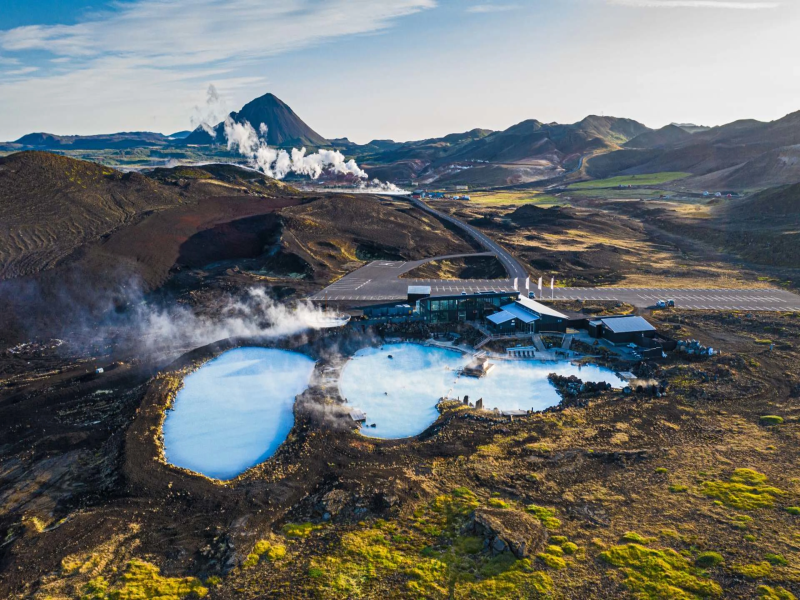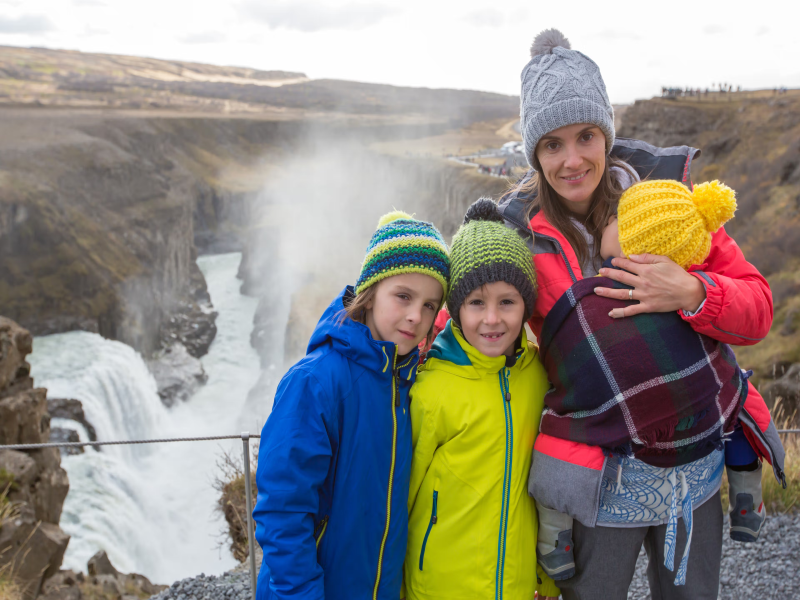People heading to Iceland can be expected to have an unforgettable and marvelous experience because Iceland refers to itself as the land of fire and ice. Indeed, the scenery of the country the glaciers supplemented by geothermal fields have made the island a perfect tourism destination in recent years. However, this influx of visitors also presents a challenge: how does man sample this region in a smart way and ensure it remains breathtaking forever? By following this guide to environmentally friendly travelling in Iceland, you’ll be armed with the necessary information and skills to travel greens and still enjoy the wonders that Icelandic nature offers.

Why Sustainable Tourism in Iceland is so important? – Eco-Friendly Travel in Iceland
People affecting environment is sensitive in this nation and they can cause negative effects easily. Well, the fact is that there are many interesting and easily destructible things on the island: fragile volcanic soils, geothermal fields, endemic plants and animals, etc. Eco tourism shows how we can respect the pristine nature of Iceland, its people, and how future generations can see its marvels.
This means making informed decisions on mobility, lodging, leisure and eating and drinking. Each change you make towards sustainable travel counts towards making a large impact towards the planet. Now, let’s get right into how you can stay as sustainable as you can during your stay in Iceland!
Getting Around Iceland Sustainably
Transportation is a significant contributor to carbon emissions, so making conscious choices about how you get around Iceland is crucial for eco-friendly travel. Here’s how to minimize your impact while exploring this incredible island:
Choosing Green Transportation
- Flying: Air travel inevitably has a carbon footprint. If you choose to fly, consider offsetting your emissions through reputable carbon offset programs. Look for airlines that prioritize sustainability and have initiatives to reduce their environmental impact.
- Renting Electric or Hybrid Vehicles: Iceland has a growing network of charging stations, making electric and hybrid vehicles a fantastic option for exploring the country. Many car rental companies offer these eco-friendly choices.
- Tip: Plan your routes in advance to ensure charging stations are available along the way.
- Utilizing Public Transportation: Iceland has a decent public transportation system, especially for traveling between major towns and cities. Buses are a more sustainable option than individual car rentals. Check out Strætó (www.straeto.is) for routes and schedules.
- Exploring Cycling and Walking Options: For shorter distances or exploring specific areas, consider cycling or walking. This allows you to immerse yourself in the landscape and truly connect with nature. Many towns offer bike rentals, and there are scenic walking paths throughout the country.
Pro Tip: Minimize your driving distances by planning an efficient itinerary. Focus on exploring specific regions rather than trying to cover the entire island in one trip.
Responsible Driving Practices
Even if you’re not driving an electric vehicle, you can still practice responsible driving habits to reduce your impact:
- Fuel Efficiency: Some of the ways include; observing speed limits and minimizing the amount of time spent idle. Most of these can go along way in enhancing fuel economy on the roads.
- Stay on Marked Roads: The landscapes of Iceland are sensitive. It is also important to recognize that off trail travel destroys vegetation and other sensitive ecosystems, therefore should stick to the marked roads and trails.
- Off-Road Driving Restrictions: The government of Iceland has banned off-road driving and it is harmful to the environment in the country. Observe all these limitations and confine yourself to paved roads only.
When it comes to car choices and driving style it is possible to minimize one’s contribution to environmental deterioration as well as enjoy the fabulous views of Iceland.
Eco-Conscious Accommodation in Iceland
Where you choose to stay during your trip can also make a big difference in your environmental footprint. Luckily, Iceland offers a range of sustainable accommodation options for eco-conscious travelers.
Sustainable Hotels and Guesthouses
Look for accommodations that prioritize sustainability and have implemented eco-friendly practices. The Vakinn certification is a great indicator of a commitment to environmental responsibility. Vakinn (www.vakinn.is/en) is the official quality and environmental certification program for Icelandic tourism businesses. It assesses various criteria, including:
- Energy efficiency
- Waste management
- Water conservation
- Use of eco-friendly products
- Support for local communities
Many hotels and guesthouses in Iceland have embraced sustainable practices. Here are a few examples:
- Hotel Ranga: This hotel utilizes geothermal heating and has implemented energy-saving measures throughout the property.
- ION Adventure Hotel: Built with sustainable materials and powered by geothermal energy, ION Adventure Hotel minimizes its environmental impact while offering stunning views.
- Blue Lagoon Silica Hotel: This hotel is renowned for its sustainability efforts, including using geothermal water for heating and electricity.
When booking your accommodation, inquire about their specific sustainability initiatives and choose those that align with your values.
Eco-Friendly Camping and Cabins
For those who love to be closer to nature, there is camping and if you prefer a little more comfort you can try the environmentally friendly cabins for rent options. Remember to follow these guidelines:
- Leave No Trace: Take out all your trash, tread lightly on our planet and leave the campsite in the condition that you found it.
- Designated Campsites: For this reason, it is advisable to occupy specific sites to reduce the pressure on the region’s easily destabilized ecosystems.
- Eco-Friendly Gear: Select camping equipment made from natural and organic fabrics; the consumer should refrain from using disposable products.
If you would like some extra luxury, hotels with cabins that are properly equipped and environmentally friendly are available. It is good to search for the cabins that are made of sustainable materials and natural resources energy. Some contain composting toilets, recycling stations and many other green elements, most of the times, involuntarily.
Everyone is aware to book accommodations which are eco friendly because they ensure that they take care of natural resources so that the tourism in Iceland can be friendly to the environment.
Minimizing Your Footprint While Exploring
In Iceland there is a tremendous beauty, a beauty also fragile and we should respect that. Here’s how to minimize your impact while exploring the great outdoors:
A process of acknowledging the nation’s geographical features
- Stay on Marked Trails: Off trail exploration affects soil structure by compacting and eroding vegetation surface and disrupts the natural habitats of animals. These are some of the most delicate ecosystems in the world, so it is recommended that these trails are used and not strayed from.
- Observe Wildlife from a Distance: Wildlife of Iceland cover many kinds of animals such as the puffin, whales, and even arctic fox. When observing these creatures make sure not to interfere with their actions by either scaring them away or by getting to close.
- Hands Off: Do not collect items from nature, i.e. rocks, plants, exhausting all the feathers of a bird. Don’t forget to leave the location as you found it so that everyone has to feast on the natural environment of Iceland.
- Geothermal Areas: Geothermal areas are interesting but admittedly risky. These are unique ecosystems; ensure you walk or drive only in authorized zones and obey safety measures to eliminate disasters.
Outdoor activities and hiking code of conduct
- Pack It In, Pack It Out: Always take your trash around with you – and that includes biodegradable items such as banana skins. Forest is a sanctuary where you need to leave no imprint of your visit.
- Choose Sustainable Tour Operators: When you are in guided tours then ensure that you select operators who take the conservation of the environment into consideration. They can be of great use and help to good and determine that your activities do not interfere.
- Be Prepared: Sometimes the weather conditions may be quite unpredictable in Iceland. Please pack adequate clothing and equipment in order to maximise personal safety and reduce the chance of possibly requiring help.
It is possible to protect the beauty of Iceland and to enjoy the authority of nature to avoid dangerous consequences to have an unprecedented experience.
Sustainable Food and Shopping Choices
But even your meals on the go and Tv and retail selections that you make while at your travel excursion will also provide environmentally sustainable Iceland visit. Here’s how to make a positive impact:
Policies associated with support for local food and products
- Eat Local: Iceland has a very lively food culture, especially with a very big focus on the quality of food being fresh and locally sourced. When serrating at restaurants and cafes the 4 C’s then you are reducing the carbon footprint by cutting transport costs and using local produce from farmers and producers.
- Sustainable Restaurants: Food sustainability is well established across a number of restaurants in Iceland; restaurants that use organic food stuffs, recycle wastes and use sustainable seafood. Just like this you can simply look for certifications or you can also ask them for their sustainable practices.
- Local Souvenirs: While purchasing some souvenirs it will be better to buy local products rather than commercial ones, for example, handicrafts. It helps the indigenous artists and also cuts down the costs of transportation hence friendly to the environment.
Waste management and special efforts to control the use of plastics
- Reusable Water Bottle: Iceland has some of the best quality water in the entire planet. Carry your own refillable bottle of water taken from the tap. This assists in eliminating plastic pollution and still cost you less.
- BYOB (Bring Your Own Bag): Use a reusable shopping bag so as to deny yourself the temptation of using unnecessary plastic bags. Some stores in Iceland sell plastic bags, and therefore to make a dentist cost-cutting and an eco-friendly achievement, one should make sure they carry their own bags.
- Minimize Packaging: Select and buy products with the least amount of packaging material or, purchase products by the bulk where possible. This acts as a way of cutting down waste and your impact on the environment in the process.
- Responsible Disposal: Recycle your waste goods. Recycle when and where possible and must always try to be as least intrusive as possible particularly when sightseeing the spectacular landscapes of Iceland.
There are ways to watch what you buy and eat these are to support the local people; waste fewer resources, and help make the Icelandic tourism sector sustainable.

Making a Positive Impact
However, sustainable or ‘low impact’ travel is not just about reducing harm – it also has themes of active rehabilitation, or making beneficial contributions to our host environment and people. Here’s how:
Interview Question: As a homegrown company, what have you done for the local community?
- Support Local Businesses: Opt to purchase products at independent businesses, or eateries, stores and travel agencies. Obviously this contributes to the Icelandic economy and assists in protecting the traditions and customs of the island.
- Volunteer Opportunities: It might be helpful to perform some volunteer work in the capacity of environment protection or any local organization. and it also help you in a way to contribute to the society and make a positive impact.
- Cultural Exchange: Explore the customs and aeti-archeology of the Icelandic people and familiarize yourself with a facet of the culture herein. This creates a basic knowledge and admiration of the people and area you intend to visit.
Recent mathematics shows that we can in fact offset our carbon footprint.
Visiting a place always comes with carbon emission no matter how much one tries to embrace environment conservation. Explore carbon offsets as a way of reducing your emissions via legit carbon offset programs.
- How Carbon Offsetting Works: Carbon offsetting involves investing in projects that reduce greenhouse gas emissions, such as reforestation, renewable energy development, or methane capture. This helps to compensate for the emissions generated by your travel.
- Reputable Organizations: Choose organizations that are transparent about their projects and have a proven track record of success. Some popular options include:
- Kolviður (www.kolvidur.is) – Focuses on reforestation projects in Iceland.
- South Pole (www.southpole.com) – Offers a variety of global carbon offset projects.
- Calculate Your Emissions: Many online calculators can help you estimate your carbon footprint based on your travel itinerary. This allows you to determine the appropriate amount to offset.
By giving back to the community and offsetting your carbon footprint, you can leave a positive impact on Iceland and contribute to its long-term sustainability.
Here’s a draft conclusion for the blog post “Eco-Friendly Travel in Iceland: How to Minimize Your Impact”:

Conclusion: Leave Iceland Better Than You Found It
Going to Iceland is an amazing experience where four-season traveler can see places and things which they rarely can meet in other countries; however, being in this country as a tourist, one must understand how to preserve this land. The tours may also come with such policies as using ecological friendly accommodation like green lodges, using disposal items and avoiding disturbance on the natural environment backdrops of Iceland.
Each conscious choice you make – whether it be to buy goods from locals, visit during the low season, or otherwise take care of nature – is immensely beneficial for the continued functioning of this rather sensitive environment. When travelling sustainably, the goal isn’t only to do no harm, it’s to actually do some good.
Thus, when planning a trip to Iceland, choose being sustainable. Alone, it is impossible but when we join our efforts we will remain the Land of Fire and Ice for generations to come.
Resources for Eco-Friendly Travel in Iceland
Planning your eco-friendly trip to Iceland is easier with the right resources. Here are some helpful websites, organizations, and apps to guide you:
- Vakinn: (www.vakinn.is/en) As mentioned earlier, Vakinn is the official quality and environmental certification program for Icelandic tourism. Use their website to find certified accommodations, tour operators, and other businesses committed to sustainability.
- Inspired by Iceland: (www.inspiredbyiceland.com/) The official tourism website of Iceland offers a wealth of information on sustainable travel, including tips, resources, and responsible travel guidelines.
- Reykjavik’s Environmental Initiatives: (https://reykjavik.is/en/reykjavik-and-climate) Learn about the city of Reykjavik’s efforts to become a more sustainable city and find information on eco-friendly transportation, waste management, and other initiatives.
- Landvernd (Icelandic Environment Association): (www.landvernd.is/english/ [invalid URL removed]) This non-profit organization focuses on environmental protection in Iceland. Their website provides valuable information on conservation efforts and responsible travel.
By utilizing these resources, you can gather information, plan your itinerary, and make informed choices that align with your eco-friendly travel goals.




